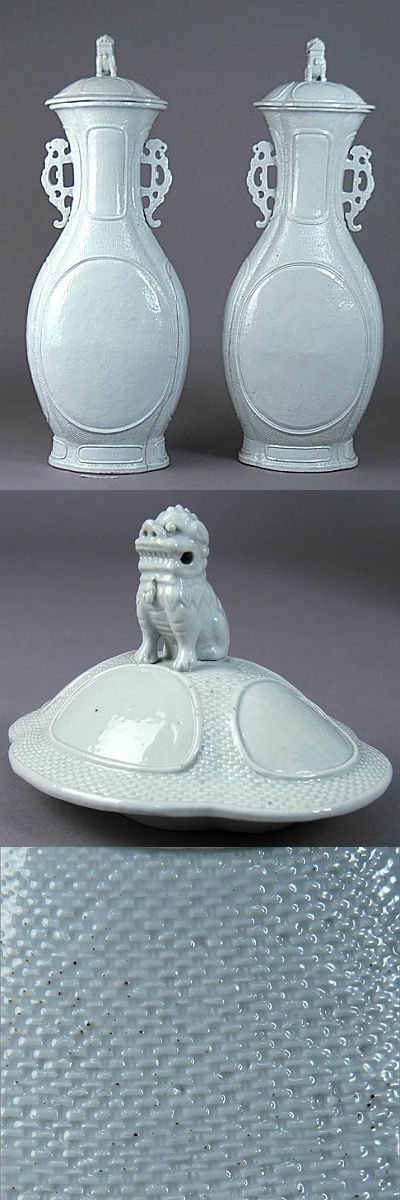
Export porcelain with a surface imitating repoussé work.
Method of decorating metals in which parts of the design are raised in relief from the back or the inside of the article by means of hammers and punches. Definition and detail can then be added from the front by chasing or engraving. The name repoussé is derived from the French pousser, 'to push forward.' This ancient technique, which has been used extensively throughout the history of metalworking, achieved widespread popularity in Europe during the 16th, 17th, and 18th centuries.
Already on Northern Celadon wares, produced in Hebei and Henan in the 6th century, we find exotic reflections of the taste of Turkish rulers and other cultural contacts with western Asia. For example, heavy funerary jars are adorned with acanthus and lotus leaves, and flowers and round decorative plaques are molded or applied to the surface in imitation of Sasanian (Persia) repoussé metalwork.
On Chinese export porcelain this method of decoration was imitated on during the second half of the 18th century giving a surface to porcelain as if it had been punched from the inside.
A